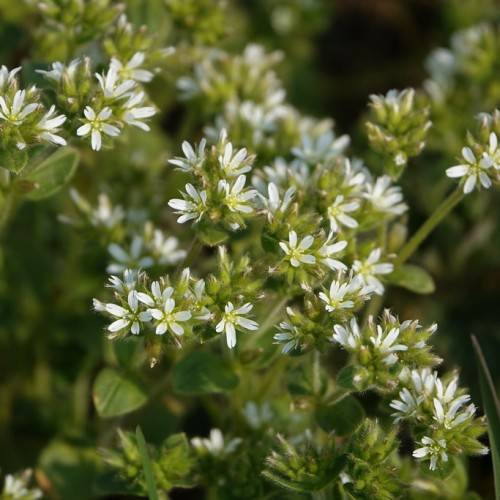
Sticky Mouse Ear Chickweed
Cerastium glomeratum
Watering:
Frequent
Hardiness Zone:
Sun:
full sun,part shade
Leaf:
Yes
Growth Rate:
Low
Drought Tolerant:
Yes
Salt Tolerant:
Yes
Invasive:
Yes
Care Level:
Easy
watering
For Mountain Mouse-Ear Chickweed, it's best to water regularly to keep the soil moist and moisten the surface of the soil without actually saturating it. Allow the soil to dry between waterings, but avoid allowing it to dry out completely. It is recommended to water this plant 2 to 3 times a week, depending on the weather and where it is located. If the plant is exposed to direct sunlight or strong winds, it may need to be watered every day.It's also important to avoid overwatering as this will decrease oxygen levels in the soil and create an environment where pathogens can thrive and, potentially, damage the plant.
sunlight
Mountain Mouse-Ear Chickweed (Cerastium fontanum subsp. fontanum) needs moderate amounts of direct sunlight throughout the day for proper growth and flowering. It can grow well in full sun or partial sun exposure, as long as it gets 5 to 6 hours of sunlight each day. In areas with shorter days, it should receive direct sunlight for at least 4 hours per day. It may lose some of its natural beauty and be less productive if it does not receive enough sunlight throughout the day.
pruning
Mountain Mouse-Ear Chickweed (Cerastium fontanum subsp. fontanum) should be pruned during the winter months, after it has gone dormant and the temperatures have dropped. Pruning should be limited to light trimming back of tips to encourage more compact, bushy growth. To ensure healthy growth, remove any wilted, diseased, or dead stems as soon as they appear. This will help prevent the spread of disease. Prune Mountain Mouse-Ear Chickweed to keep it neat and to encourage more flowering. Severe pruning is not recommended.
